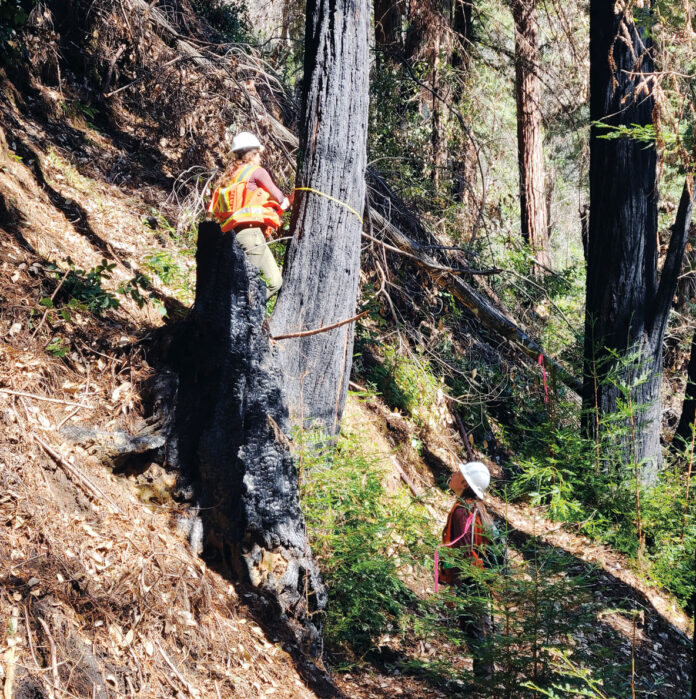
Powers Forestry LLC has been tapped to complete tree work along a 1.3-mile section of Foreman Creek and Peavine Creek, as part of ongoing community efforts to rebuild after the 2020 CZU Lightning Complex Fire.
San Lorenzo Valley Water District (SLVWD) announced the emergency contract—approved unanimously at the March 16 SLVWD board meeting—meant to assess hazardous trees to start the reconstruction of the Peavine Raw Water Pipeline that was destroyed by the fire.
According to District officials, Phase 1 of the $31,970 job will include survey and inventory work to record trees that will be removed to accommodate the pipeline.
In the second phase, a six-person crew will clear fallen trees and remove leaning or damaged ones. They’ll also spread small branches and logs around the area to protect it from erosion.
“After work is completed, District staff will have a better understanding of the terrain to move forward with evaluating a construction alternative to replace the pipeline,” said an SLVWD spokesperson in a news release.
The project began this month, and is expected to take four weeks. The Federal Emergency Management Agency is picking up most of the tab through a reimbursement grant.
“The District has been focused on recovering not only from recent storm damage, but also from damage sustained in the CZU Fire,” said District Manager Rick Rogers. “It has been a difficult road to bring all of the SLVWD infrastructure back online.”
The CZU Fire caused significant damage to the San Lorenzo River watershed and District assets, in particular Peavine and 5-Mile pipelines.
“The Peavine and 5-Mile segments need to be reconstructed to restore the critical surface water supply for the SLVWD system,” Rogers said. “Damage in the area has made it dangerous for District staff to conduct necessary pipeline replacement and repair work. Clearing this area of hazards is the first step in replacing the pipeline.”
The District has managed to satisfy water demand solely through surface sources, which SLVWD officials credit to recent rainfall.
“Efforts to rebuild damaged infrastructure will ensure that District customers continue to have access to clean, reliable water,” a spokesperson said. “The District is committed to continue maintaining, repairing infrastructure in its service area.”
The District, which has more than 7,500 customers, says the contract is key to rehabilitating its raw water line.
“Once the assessment is complete, discussions on how the pipelines will be reconstructed will begin,” Rogers said. “We’re happy to finally move forward and begin assessing the trees along the Peavine pipeline.”












